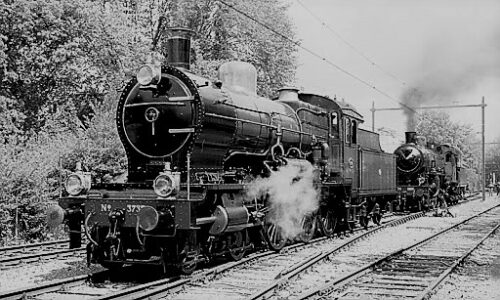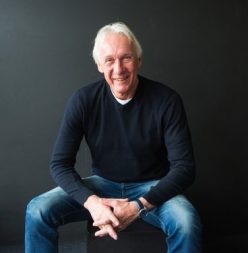
UNDER STEAM
Written by Bert Plomp
In the early sixties, I used to watch a new episode of Ivanhoe on TV every week. Ivanhoe was the valiant knight who fought against the Norman Prince John, a royal son who sought to subjugate the Saxon people. This wicked John was assisted by his henchman in crime, Sir Maurice. In contrast, the noble knight could always count on the dedication of the honest blacksmith Gurth and his equally likable adopted son, Bart. In the series, Roger Moore, our future 007, played the heroic role of Ivanhoe. In this clash between good and evil, the parties engaged in sword fights on screen every week, with Ivanhoe being the obvious victor in many duels. Not long after World War II, when vengeance was still fresh in people’s minds, combating evil was quite popular. Films and TV series featuring heroes were immensely popular.
My friends and I wanted to join in on the general admiration for brave fighters. To stay in line with Ivanhoe, owning a sword and a shield was an absolute necessity. Ideally, a horse should have been part of the equation, but we barely had enough to eat at home, let alone feed a horse. There was also no money to stroll into a knight’s specialty shop to buy a beautiful silver sword and shield. Our parents believed we should combat evil with our bare hands. However, we didn’t find fighting the enemy with our bare hands very knightly. So, we crafted wooden swords from some pieces of wood. With a wooden sword, you couldn’t strike as destructively as with a steel one, but it could temporarily disorient the enemy. A piece of cardboard with a length of string woven through it served as our shield. Despite its simplicity, this cardboard defense offered some protection against enemy attacks.
One day, we discovered, by accident, how to equip ourselves with steel weapons. Near our residential area was a railroad bridge over the Kromme Rijn. Beyond that bridge, towards Ledig Erf, was the backside of the Gansstraat’s prison, the Pieter Baan Centrum. A tall wall separated the psychiatric inmates from the free world. This place, the combination of the railroad bridge and the prison, always exerted a magnetic pull on us. We had the idea to experimentally place some large steel nails on the railway tracks to see what would happen when a train passed over them. To observe the process better, we put them on the rails over the bridge so that we could watch from below. As we waited for a heavy steam locomotive to thunder over the bridge, we stood underneath it. The anticipation was heightened by the fact that we had to keep an eye on the prison wall at the same time. Occasionally, a mentally disturbed person managed to climb over it. The tension reached its peak when we heard a steam locomotive approaching in the distance. The approaching, heavy thumping of the powerful machine and the impressive sound of the steam whistle gave us goosebumps. And then, as a climax, the deafening noise of the locomotive ramming over the bridge and our nails. As we disappeared into an immense cloud of smoke and steam, we anxiously wondered if our actions might derail the entire contraption and send it plunging into the Kromme Rijn. It was a literally and figuratively breathtaking undertaking. After the train had passed and vanished from sight, we emerged from our hiding place. We climbed the embankment to retrieve our spoils from the tracks. The nails had been flattened to the thickness of a dime by the locomotive, and they were scorching hot, taking on the shape of a sword.
I have always had a tremendous fascination for trains, especially those powered by steam. In my youth, I often saw them chugging by right in front of me at the Gansstraat-Koningsweg railroad crossing. Sometimes, they even approached from both directions, heading to and coming from the Maliebaan Station, which is now the Railway Museum. What a spectacle it was, and what an impression it left on me.
I’ve had to take various psychological tests in my life, which isn’t surprising in my case. There’s plenty of reason to doubt my mental state. The first test I ever took as a child was conducted in the building of the Rijksuniversiteit at Domplein. The result was not so surprising; they assumed I would become a train engineer.
TO BE CONTINUED
For all episodes, click on: Simple pleasures
For more free stories join my Facebook page:
